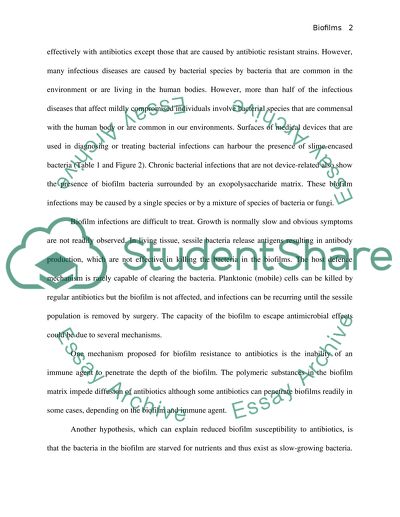Bacterial biofilms and disease PowerPoint Presentation. Retrieved from https://studentshare.org/miscellaneous/1551476-bacterial-biofilms-and-disease
Bacterial Biofilms and Disease PowerPoint Presentation. https://studentshare.org/miscellaneous/1551476-bacterial-biofilms-and-disease.


